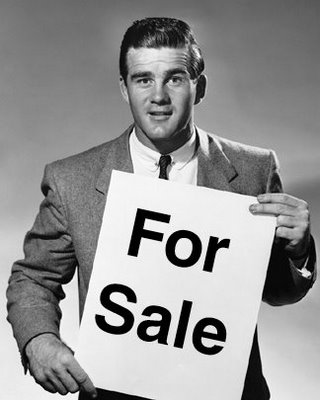
Is looking like a salesperson killing your copy?
Sometimes I feel like I’m being repetitive. But you try writing an email a day not getting repetitive!
And besides, some ideas are so good they’re worth repeating. Over, and over, and over again. Until the truth is unmistakable.
That’s where I’m at today.
This thought came up in a private side conversation with a very accomplished copywriter in the last week. And it’s one of those things that can’t be said enough.
What you think is “good copy” is not good copy.
In fact, most sales copy that follows all the rules of “good copy” — visibly, on the surface — is middling copy at best. More often than not, flat line copy that couldn’t spike sales if it was sent to its best target market.
What do I mean?
Well, we’re taught a ton of rules as copywriters. How to write headlines that hook interest. How to make and justify mouth-watering promises. How to structure a can’t-resist offer, and justify a price that’s 10X what we’re asking folks to buy. Yadda yadda yadda…
And when we’re novice copywriters and serious students, we drink up these rules like a gallon of ice water after a day lost in the Sahara Desert.
And I suppose they serve us well, for a while.
We need to write copy, and it helps to know what kind of copy has worked in the past.
The fundamentals that are the difference between writing and writing that sells.
And copy that looks like “copy” does sell — somewhat.
Write a sales letter that looks, feels, smells, tastes, sounds like a sales letter — and if the content is compelling and the offer is good enough, some folks will buy.
You will have done a good job.
But you’ll never create a sales breakthrough with that.
Just think about it… What do you think of a salesperson that comes across like a salesperson?
I don’t know how YOU decide when someone comes across like a salesperson…
But I can bet it’s something along the lines, of slick, fast-talking, glad-handing, and a little slimy…
If you’re out shopping for, let’s say, a car… And one of these salespeople is who you have to deal with to buy the car… You might put up with them long enough to get what you need.
But if they approach you — rather than you approaching them — you’re not going to give them the time of day.
That’s what you risk by writing “good copy.”
And that’s why good copy doesn’t really look like “good copy.”
If you want to create breakthrough marketing campaigns today, most often it’s not going to look overtly like a marketing campaign…
WE, as marketers, might know the hallmarks of these campaigns.
For instance, the video sales letter that has no “buy now” button until 30 minutes in when the offer is made… That starts out feeling more like an informative presentation than a pitch.
But prospects don’t necessarily recognize these up front — particularly if you’re really good at hooking their interest without blasting them with a sales message.
Really good copy today — the campaigns that are doing 7-figures or better in sales, to cold or lukewarm audiences — seldom looks and feels like sales copy out of the gate.
— Some of it is more documentary-style, doing expository reporting on some new development in the marketplace…
— Some of it involves interviews with experts on a topic of particular interest to a certain group of people…
— Some of it feels like a peer who got really into a topic, and decided to put together a bunch of really interesting information on it…
— Some of it feels more like a public service announcement than a first-touch advertisement…
— Some of it does feel a little more like a sales presentation, but still gives you a ton of valuable information throughout…
There are a ton of ways to approach it — what’s consistent is that it’s becoming more and more for the real big breakthrough campaigns to look and feel like what we think of as “advertising.”
The rules are helpful to a point — then you need to break them…
It’s not that you should never learn the rules.
Quite the opposite, in fact.
It’s important to learn the fundamentals of classic sales-in-print advertising.
The key today is to know when and why you should break them in service of a greater goal — of getting prospects involved in your sales message.
Ultimately it will have to come around to making the sale. And at that point it will be crucial to have at least the thinking behind writing a great direct response advertisement.
But you’ll never get to that point with your prospect if you’re copy looks like just another glad-handing, slimy salesperson.
Yours for bigger breakthroughs,
Roy Furr
Editor, Breakthrough Marketing Secrets



